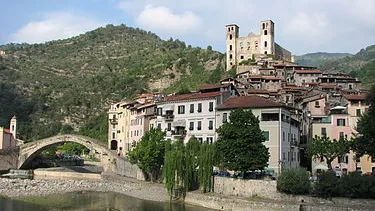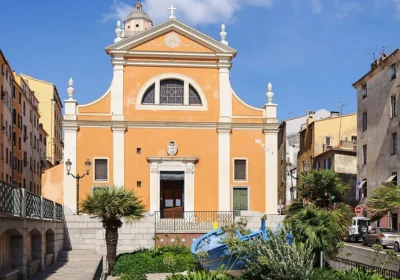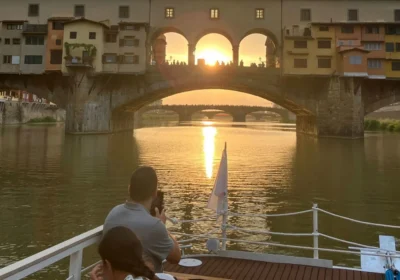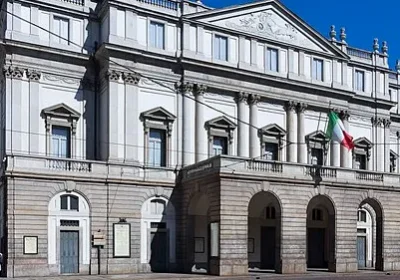Dolceaqua is a small ancient town. Its main attractions, the castle and bridge, are depicted on the canvas of the French painter Monet. The small town of Dolceacqua, more commonly referred to as a “mountain village”, stands at the foot of Mount Rebuffao, in the Nervia Valley. This land belonged in the Middle Ages to the Counts of Ventimiglia. In the middle of the XII century a castle was laid out here, which later became the nucleus of the town. In Dolceacqua today live about two thousand people. The Nervia River flows through the centre of the village and divides it into new and old parts: Borgo and Terra. The banks are connected by a convex stone bridge, the symbol of Dolceacqua. This bridge impressed Claude Monet. The Doria Castle dominates the historical ensemble of Dolceacqua. Around it are built houses with brightly coloured tiled roofs. Through the old centre, from the main square to the castle, runs the street-gallery Scasasse. Dolceacqua has art and craft workshops, local produce shops, and wine cellars (Rossese di Dolceacqua red wine is produced here). In the town there is the church of St George of the XI century, in the crypt of which the tombs of Stefano Doria (1580) and Giulio Doria (1608) are preserved. The Pinacoteca Morscio art gallery is open (visit by appointment only).
Apricale is an Italian town with 624 inhabitants. The town is one of the most beautiful places in Italy and has been awarded the orange flag of the Italian Tourist Club. The origin of the settlement is attributed to the Bronze Age, thanks to the excavations of the Pian del Re burial grounds. The village was officially founded around the 10th century by the Counts of Ventimiglia, then passed in 1276 to the Doria Counts of Dolceacqua. In 1573 representatives of the princely family of Monaco destroyed the local castle built earlier under the Doria, provoking conflicts and internal wars. Apricale is often referred to as a settlement with many frescoes, as the walls of many houses are painted with “murales” – scenes of peasant life and landscapes of Liguria. The small castle often hosts exhibitions of internationally renowned artists such as Marc Chagall, Miró, Henri Matisse and others. In the summer evenings of August a theatre company from Genoa comes here to give performances.
Pigna – attracts with its medieval appearance and its Gothic church, which preserves a composite altarpiece of St Michael from the 15th century, painted by Giovanni Canavesio, a master from Piedmont. St Sebastian’s Oratory. Built after a plague epidemic in 1502, the oratory was recently restored and today you can see the entrance with a colonnade with inscriptions dating back to 1642 and beautiful 18th century frescoes in the interior. In Pigne there are sulphurous springs, on the basis of which thermae have been created, where you can swim.





